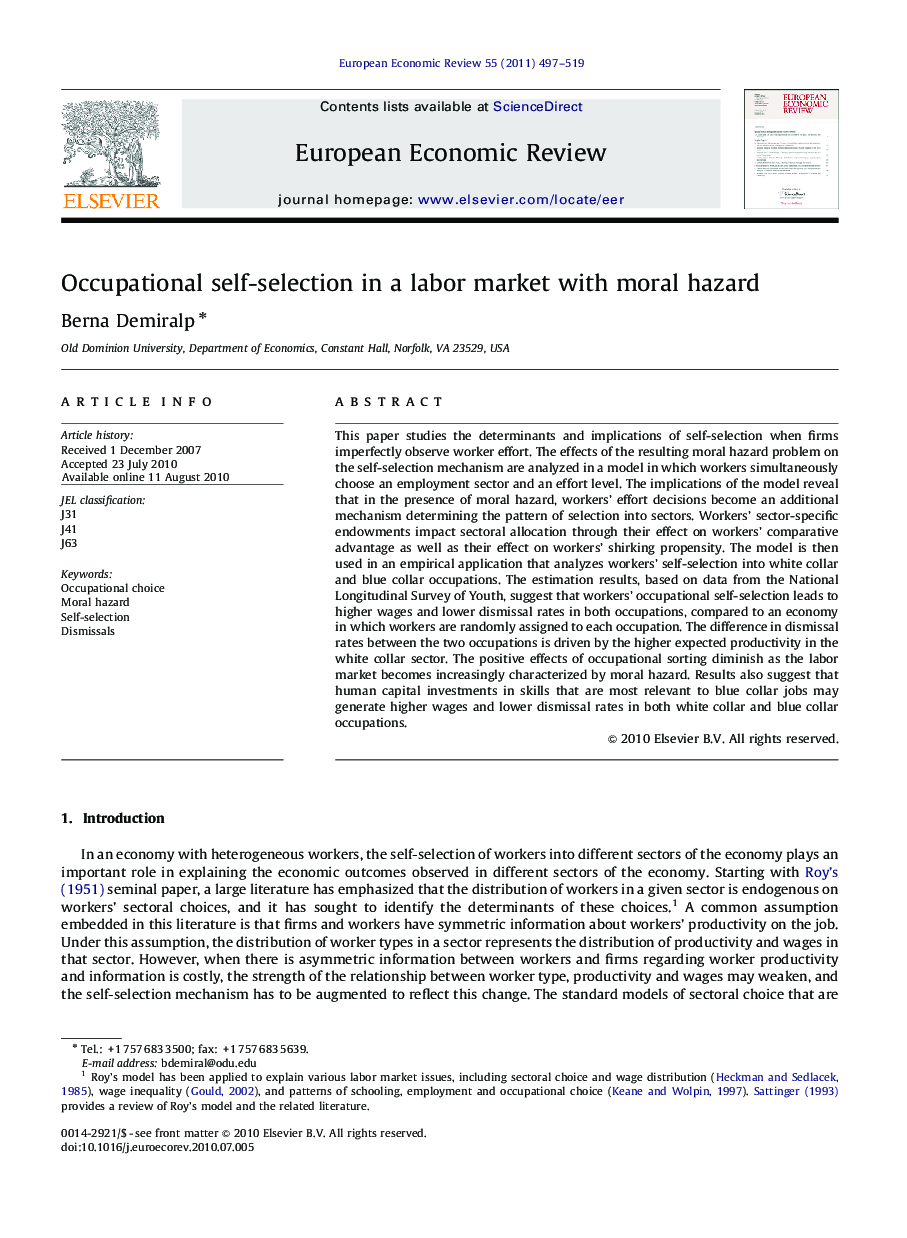| Article ID | Journal | Published Year | Pages | File Type |
|---|---|---|---|---|
| 5067154 | European Economic Review | 2011 | 23 Pages |
This paper studies the determinants and implications of self-selection when firms imperfectly observe worker effort. The effects of the resulting moral hazard problem on the self-selection mechanism are analyzed in a model in which workers simultaneously choose an employment sector and an effort level. The implications of the model reveal that in the presence of moral hazard, workers' effort decisions become an additional mechanism determining the pattern of selection into sectors. Workers' sector-specific endowments impact sectoral allocation through their effect on workers' comparative advantage as well as their effect on workers' shirking propensity. The model is then used in an empirical application that analyzes workers' self-selection into white collar and blue collar occupations. The estimation results, based on data from the National Longitudinal Survey of Youth, suggest that workers' occupational self-selection leads to higher wages and lower dismissal rates in both occupations, compared to an economy in which workers are randomly assigned to each occupation. The difference in dismissal rates between the two occupations is driven by the higher expected productivity in the white collar sector. The positive effects of occupational sorting diminish as the labor market becomes increasingly characterized by moral hazard. Results also suggest that human capital investments in skills that are most relevant to blue collar jobs may generate higher wages and lower dismissal rates in both white collar and blue collar occupations.
